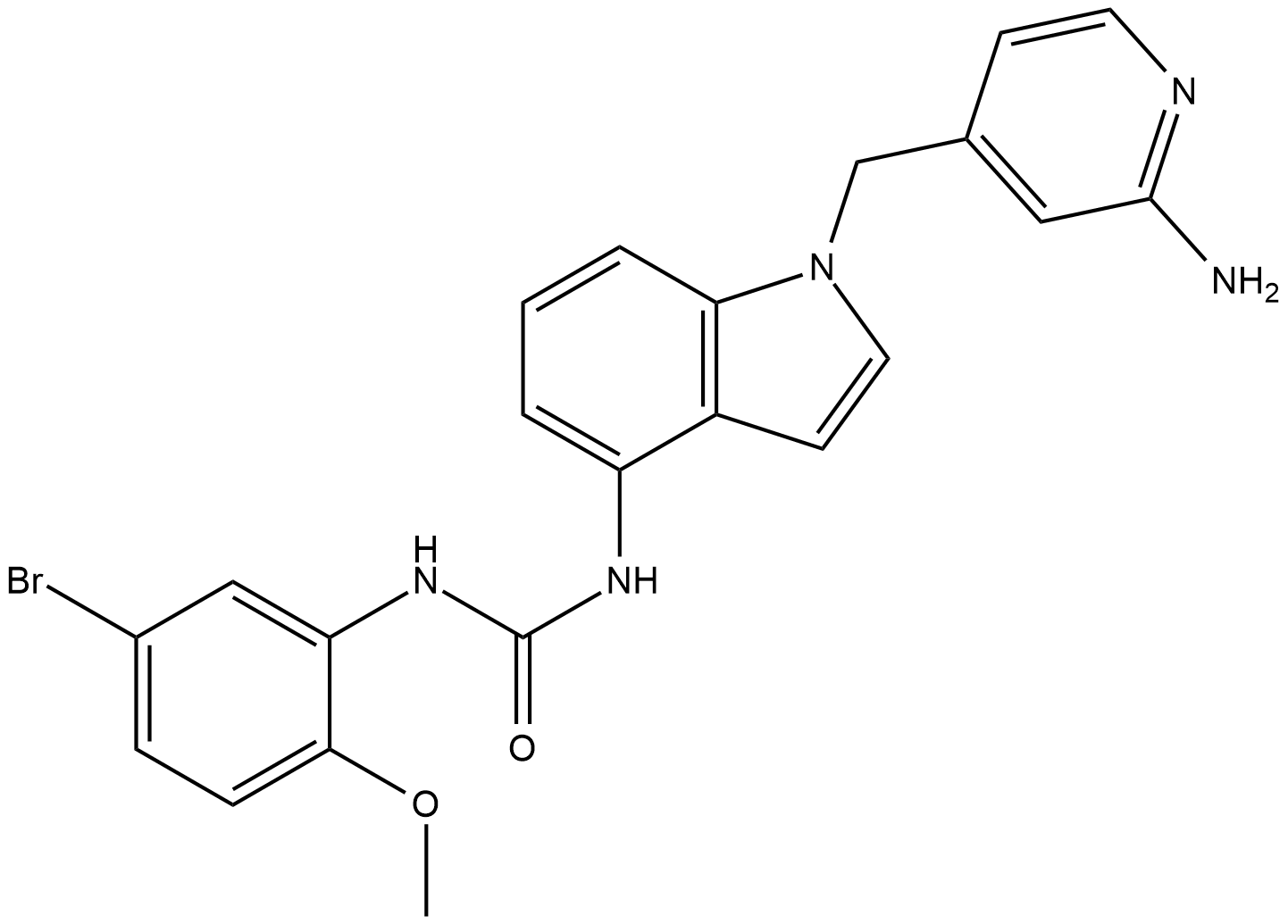JI-101 (Synonyms: CGI1842) |
| Catalog No.GC18168 |
An orally active inhibitor
Products are for research use only. Not for human use. We do not sell to patients.

Cas No.: 900573-88-8
Sample solution is provided at 25 µL, 10mM.
JI-101 is an orally available multi-kinase inhibitor of VEGFR2,PDGFRβ and EphB4 with potent anti-cancer activity.
JI-101 is found to be stable in all preclinical and human liver microsomes. The % metabolized is ranged between 3.03-3.95 across the tested species liver microsomes. The % metabolized is relatively higher in mice liver microsomes followed by dog, human and rat liver microsomes[1].
JI-101excreted through bile along with its mono- and di-hydroxy metabolites. Following oral administration, JI-101 is rapidly absorbed, reaching Cmax within 2 h. The t1/2 of JI-101 with intravenous and oral route is found to be 1.75±0.79 and 2.66±0.13 h, respectively. The Cl and Vd by intravenous route for JI-101 are found to be 13.0±2.62 mL/min/kg and 2.11±1.42 L/kg, respectively. The tissue distribution of JI-101 is extensive with rapid and preferred uptake into lung tissue. Overall, the oral bioavailability of JI-101 is 55% and the primary route of elimination for JI-101 is feces[1].
References:
[1]. Gurav SD, et al. Pharmacokinetics, tissue distribution and identification of putative metabolites of JI-101 - a novel triple kinase inhibitor in rats. Arzneimittelforschung. 2012 Jan;62(1):27-34.
Average Rating: 5 (Based on Reviews and 24 reference(s) in Google Scholar.)
GLPBIO products are for RESEARCH USE ONLY. Please make sure your review or question is research based.
Required fields are marked with *




















